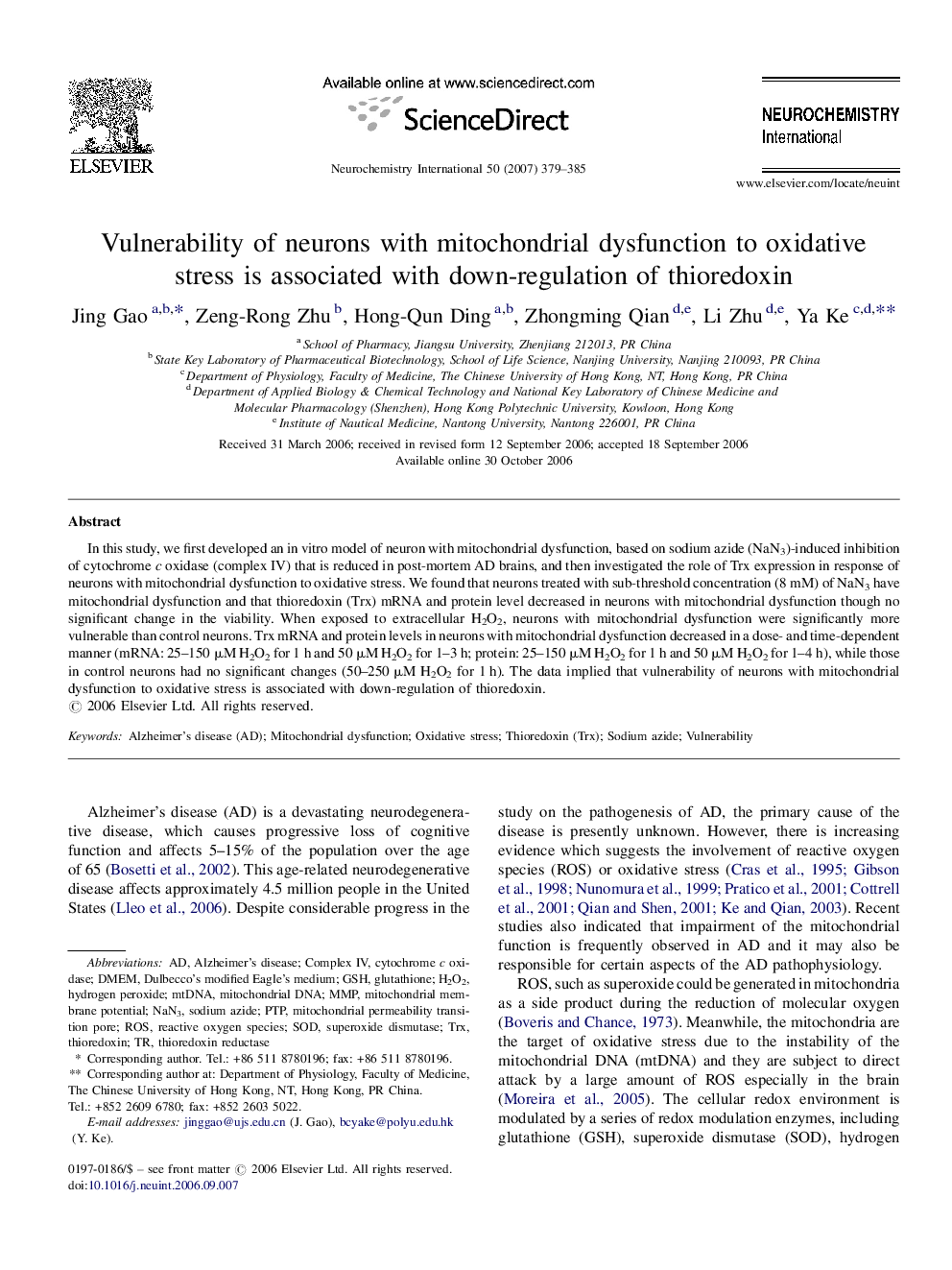| Article ID | Journal | Published Year | Pages | File Type |
|---|---|---|---|---|
| 2202170 | Neurochemistry International | 2007 | 7 Pages |
In this study, we first developed an in vitro model of neuron with mitochondrial dysfunction, based on sodium azide (NaN3)-induced inhibition of cytochrome c oxidase (complex IV) that is reduced in post-mortem AD brains, and then investigated the role of Trx expression in response of neurons with mitochondrial dysfunction to oxidative stress. We found that neurons treated with sub-threshold concentration (8 mM) of NaN3 have mitochondrial dysfunction and that thioredoxin (Trx) mRNA and protein level decreased in neurons with mitochondrial dysfunction though no significant change in the viability. When exposed to extracellular H2O2, neurons with mitochondrial dysfunction were significantly more vulnerable than control neurons. Trx mRNA and protein levels in neurons with mitochondrial dysfunction decreased in a dose- and time-dependent manner (mRNA: 25–150 μM H2O2 for 1 h and 50 μM H2O2 for 1–3 h; protein: 25–150 μM H2O2 for 1 h and 50 μM H2O2 for 1–4 h), while those in control neurons had no significant changes (50–250 μM H2O2 for 1 h). The data implied that vulnerability of neurons with mitochondrial dysfunction to oxidative stress is associated with down-regulation of thioredoxin.
